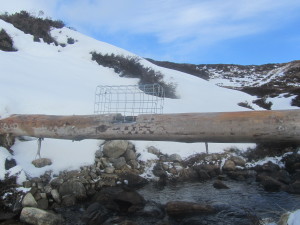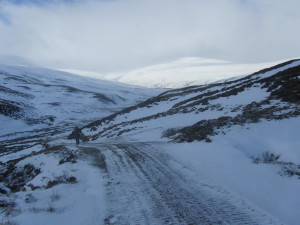On Tuesday the RSPB reported the death of a Hen Harrier on a moor near Newtonmore last September http://www.rspb.org.uk/community/ourwork/skydancer/b/skydancer/archive/2016/03/22/hen-harrier-lad-found-dead-on-speyside.aspxhe It was good to hear Grant Moir, the Chief Executive of the Cairngorms National Park, condemn the probable killing outright – a more upfront response than the Park’s reaction to the Mountain Hare massacres last week. The commitment he made though was rather vague and I doubt will have anyone who persecutes raptors trembling in their boots “The National Park Authority will work with all our partners to try and ensure that raptor crime is a thing of the past and that populations and ranges recover in the Park.”
How hunting byelaws could stop raptor persecution
The CNPA needs to start thinking about how it can use its powers to make persecution of wildlife by estates much harder if not impossible. As I pointed out last week, https://parkswatchscotland.co.uk/2016/03/20/mountain-hare-massacres-balmoral-cairngorms-national-park/ the Park could use its powers to create byelaws to to protect species like the mountain hare and to control hunting in the National Park. It is interesting that while the Loch Lomond and Trossachs National Park has been so keen, encouraged by the Minister, to try and ban camping for spurious conservation purposes, when it comes to the deliberate destruction of wildlife, the Cairngorms National Park and the Minister have so far been silent about the need for more controls.
Here are some ways in which the CNPA could use hunting permits to protect wildlife::
- permits could be removed if an estate or anyone connected to it committed a wildlife crime (this would be a huge deterrent for estates whose main purpose is hunting)
- permits could be issued on condition the landowner waived any right they might have to require RSPB and other wildlife organisations to seek permission before ringing or tagging wildlife on their land (or indeed set up monitoring cameras). The RSPB had had to ask permission to tag the Hen Harrier which was found dead – it was given which was great but how many other estates refuse or fail to cooperate?.
- permits could put a limit on the size of grouse “bags” shot by any one person or on any one day. One of the drivers behind grouse moor intensification is that the size of the bag is very important to the people who shoot grouse. Put simply the more grouse the better the day and the more the people shooting the grouse are willing to pay for it. Putting a limit on bags would help challenge this mindset which results in pressure on estate staff to increase grouse numbers in whatever way they can.
- permits could be required for any wildlife trapping in the Park which would stop the proliferation of traps on grouse moors which has been directed at eradicating stoats

Stoat trap, Dalnaspidal (close to the National Park Boundary)
How development planning powers could help prevent raptor persecution
I visit Newtonmore regularly and the moors around it and along the A9 corridor all provide good habitats for Hen Harrier. Over the last twenty years there have been significant developments on most of the private estates in the area which are linked to the intensification of grouse moor management: new luxury estate housing for the shooters; the creation and upgrade of hilltracks to make it easy for shooters to get up the hill and for gamekeepers to pursue their business; the upgrading of bothies to provide places for the shooters luncheon. As Planning Authority, the Park has had a role in facilitating these developments. Its time that it had a re-think. As a National Park it needs to set an example to other Planning Authorities about how to use existing and potential planning powers to prevent and influence developments that are associated with the intensification of grouse moor management and the destruction of wildlife.
Among the things the CNPA could do are:
- call on the Government to give National Parks full planning powers over the creation of hill tracks not just on landscape grounds but because of their role in wildlife persecution (I now think of tracks as persecution corridors because they give easy access to gamekeepers to set traps or monitor anything they regard as vermin). At present the CNPA can only control hill tracks in the National Scenic Areas which cover the central Cairngorms and Deeside. Moreover because they are not a full planning authority they do not have to be notified of proposals under the Scottish Government’s new prior notification scheme where estate owners have to tell planning authorities what they are intending to do before doing it anyway.

This hilltrack on Dalnaspidal estate just inside the CNPA boundary was created 2-3 years ago - the Park should make it clear it opposes the creation of all new hill tracks on moorland in the National Park (the main purpose of which is the intensification of grouse management)
- the Park should then start challenging estates about their claims that tracks on moorland have been constructed for agricultural or forestry purposes (which are permitted developments and are the loophole by which estates create tracks without planning permission). It should consider taking legal action to require such tracks to be removed. One case would be sufficient to get landowners to think twice………….
- the Park should use its development planning powers creatively to influence the large-scale investments that are being made on some estate properties at present to ensure that the investment does not lead to even greater grouse moor management. Investments such as those at Dalnaspidal, http://www.lochericht.co.uk/dalnaspidal-lodge.html
to which the Park granted planning permission a couple of years ago, are aimed at people with a lot of money who want to shoot a lot of grouse. Once constructed the pressure is then on estate staff to ensure they attract enough paying guests to pay for the investment. The main way they do this is by increasing grouse numbers and the temptation must be to do this by whatever means they can, particularly if their accommodation is owned by the estate. I have walked over the Dalnaspidal estate several times in the last year (both inside and outside the Park boundary) and there are grouse everywhere but not a lot else. A pre-condition for planning permission on estates should be that they can show that a proposed development is contributing to the conservation purpose of the National Park and that the investment will not lead to further destruction of wildlife.
It was not by chance that the dead Hen Harrier had been born and ringed on land owned by Wildland Ltd, better known as the Glen Feshie Estate, and owned by Anders Holch Povlsen. He has been committed to conservation and is doing the opposite to most other private landowners in the area, reducing red deer numbers and enabling other wildlife to increase. He has also bought up and invested a lot of money in Killiehuntly farm, just like Dalnaspidal, but by all appearances the land round about is being managed in a very different way.

1 Comment on “There are lots of ways for the Cairngorms National Park to stop raptor persecution”